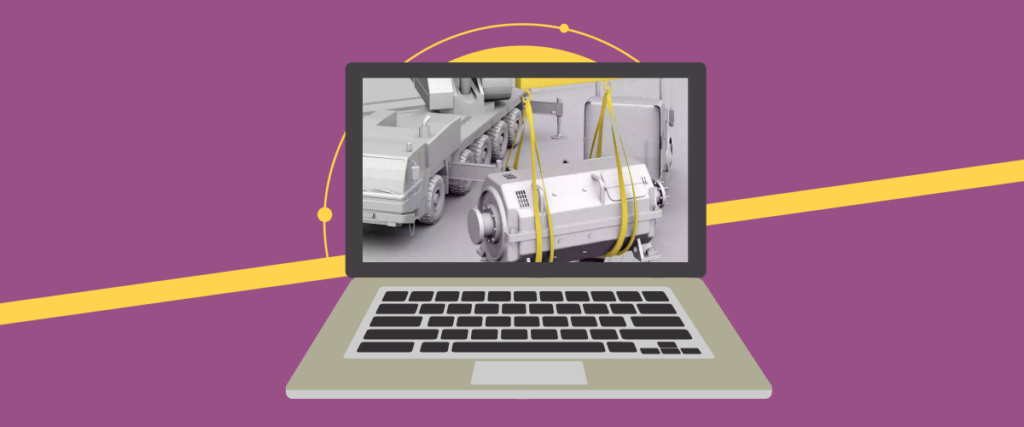
Motion Graphics vs Animation: Business Objectives and Best Practices
Written by: Jared Williams, 3D Motion Graphics Designer
So, you’ve realized how awesome motion graphics and animation is and you want to see how this type of video performs in your content marketing mix. Or, maybe your company is in need of a new internal training video that peaks the attention of your employees. No matter what your video goals are, there’s a good chance you can accomplish them using motion graphics or animation (or a combination of the two).
The Basics
Before we go any further, it’s important to explain that everything we’re talking about here is a type of “animation.” Animation is defined as “the manipulation of electronic images by means of a computer in order to create moving images.” Motion graphics are “pieces of digital footage or animation which create the illusion of motion or rotation.” So, while motion graphics are a type of animation, they are somewhat different in both creation process and final product. More on this later.
Objectives for Business
Next, before soliciting these services, it’s vital to first define exactly what you are trying to achieve with your video. Not only does this help guide designers in the creative production process, it also helps when it comes time to place and distribute your motion masterpiece. There are four main business objectives that motion graphics and animation can help achieve: explaining, training, selling, and telling.
Explaining
If you have to convey a complex idea, company structure, or product you can make it easily understandable and actionable with all types of animation. Motion graphics are great for adding contexts such as names, services, stats, and product specs.
Training
Animation and specifically motion graphics are terrific teaching tools. There really is no better way to make a stiff and uninspiring topic interesting and memorable than applying original moving visuals.
Selling
The beauty of animation is that it’s entertaining and fun to watch (when done right). It breaks through the noise of traditional marketing efforts and catches the attention of consumers without them even realizing it.
Telling
Animation and motion graphics simplify the complex and help present information in a clear and memorable fashion. Who would you rather have telling the results of last quarters gross profit margin ratio analysis? Todd from finance or an animated superhero who uses last quarter’s financial numbers to defend the galaxy from alien invasion?
Now that we have a better understanding of the business objectives for motion graphics and animation let’s talk specifically about the characteristics of both and where they perform best.
Motion Graphics
Motion graphics are often referred to as animated infographics. At the heart of motion graphics are two main elements: graphic design and information. First, static graphics are created. Then, those graphics are given specifically-timed movement in order to tell a story. Voiceovers can also be added to further convey information. The result is an easy-to-absorb, multi-sensory stimulating video with a beginning and ending. This type of information-driven video is ideal for conveying capabilities, data, and statistics. Motion graphics add a fresh flavor to presentations and pitches and finishing flair to live-action video.
https://www.youtube.com/watch?v=EkKMyL1F5d4?rel=o
3D Motion Graphics
3D motion graphics are ideal for those situations when 2D just won’t suffice. Keep in mind that 3D motion graphics add more complexity and demand additional technical skill from a designer’s perspective. However, the result is truly extraordinary. For example, 3D motion graphics and 3D rendering allow viewers to see a product or architectural design as if it were right in front of them – what it looks like inside and out as well as how it works. Because this type of video is so cutting edge, it really positions your business as a progressive, forward-thinking company. It also shows viewers that you deeply value your product. Make the intangible tangible, and conversions usually follow.
https://www.youtube.com/watch?v=x3wRflu-g8g?rel=0
Animation
Everyone who has ever watched Saturday morning cartoons knows what this looks like. While it can involve full character and scene creation, special effects like falling snow or flying sparks are a more subtle example of animation in video. Like motion graphics, animation can be produced in 2D or 3D. When done right animated video is interesting, emotional, entertaining, and original. Using animation is a great way to show your brand’s personality or make a first impression on a company landing page. This type of video quickly catches the attention of viewers and pulls them in. Even better, animated video often encourages sharing and is known to perform extremely well on social media channels.
https://www.youtube.com/watch?v=nLFwMeNYwm4?rel=0
Hopefully, this post helped provide clarity around the difference between motion graphics and animation. Both are excellent methods for taking command of increasingly short attention spans and for transforming dry, complex information into video content that converts.
Our motion graphic artists can turn your video vision into animated reality. Leverage us to get started on your motion masterpiece.

thanks, very well written post, found it through a random google search and i shared it on my digg account
Glad you enjoyed it, Veronika. Thanks for reading and sharing!
Wow thanks for this post, its really helpful and well written.
Awesome, Khenny. Glad you found it helpful!